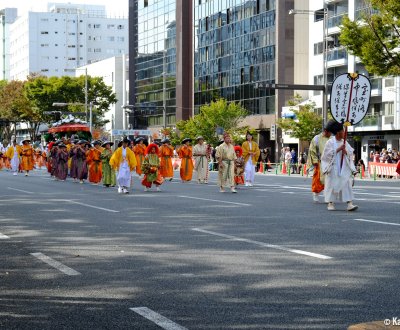Muromachi Period
Cultural Renewal And Civil War Under The Ashikaga Rule
The Muromachi Period encompasses the reign of the Ashikaga shoguns from 1336 to 1573 and is characterized by violence and political turmoils; its last century, Sengoku Jidai, is considered a very long civil war. However, it did not prevent Japan’s economic and cultural growths, with a center was back to Kinai, the area surrounding Kyoto.
The Muromachi Period marks the return of authority to Kyoto from Kamakura. It was named after the Muromachi district, located at the north-east side of Kyoto Gosho Imperial Palace, where Yoshimitsu, the influential 3rd Ashikaga shogun, established his residence Hana no Gosho near Imadegawa in 1378. Today, only a commemorative stele remains.
The period ends in the last part of the 16th century, in 1568 or 1573 depending on the historical definitions. Some even end it in 1477, at the end of the Onin War that signals the beginning of Sengoku Jidai and symbolically divides the Ashikaga reign into 2 parts.
The Golden Age of the Ashikaga and Sengoku Jidai civil war
After the fall 🍁 of the Kamakura shogunate, the emperor Go-Daigo reigned for a short period called "Kenmu Restauration" (1333 – 1336). However, his former ally Ashikaga Takauji (1305 - 1358) turned against him and used the imperial household’s divisions to obtain the title of shogun for himself and consequently ascend to power. Takauji lent his support to an opposite branch of the imperial family, creating the opposition between the Southern (in Yoshino) and Northern (in Kyoto) Courts that would last until 1392.
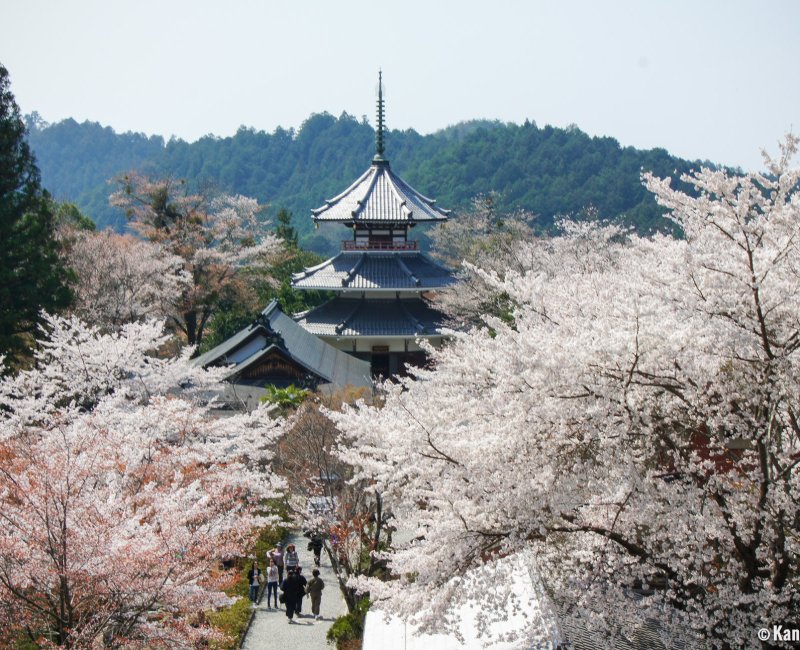
This long-standing dispute is solved by Ashikaga Yoshimitsu (1358 - 1408) whose reign from 1368 to 1394 is considered the beginning of the "Golden Age of the Ashikaga." Yoshimitsu left a long lasting mark on his times by ending a long political uncertainty period. His authority was only superseded by the emperor’s, and among other things he managed to:
- Reinstate diplomatic relations with Ming China (in 1401) after a long 4 centuries interruption of official exchanges;
- Endorse the Zen current with the building of Shokoku-ji temple (1382 - 1392).
Yoshimitsu was an eminent art amateur, and his Kitayama Villa, where he retired in 1395, would become after his death the famous Golden Pavilion (Kinkaku-ji) and the center of the "Kitayama Culture," a combination of luxury, simplicity and refinement associating the tastes of the aristocrats and the warriors.
However, from the mid-15th century, the shoguns authority starts to decline, and the point of no-return is reached with the start of the Onin War (1467 - 1477). This war is the consequence of several conflicts regarding the succession of shogun Ashikaga Yoshimasa (1435 - 1490, reign 1449 - 1473) and is viewed by historians as the 1rst great war of the Sengoku Jidai (戦国時代), the "warring states period," in reference to a Chinese historical period, that would last until the last quarter of the 16th century and durably impact the heart of the archipelago.
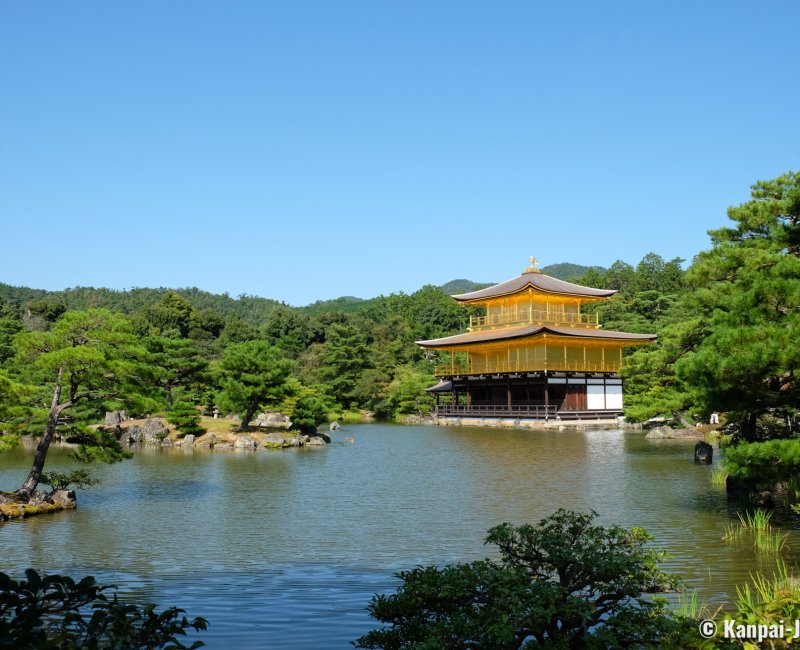
An increasingly complex social structure
Even back in Kyoto, the secular power is exerted by the Ashikaga using the same type of organization as the Kamakura Shogunate. The new bakufu also diverted the influence of the Buddhist clergy to its benefit by weaving a network of ankokuji temples ("temples for peace in the country") over the territory and by promoting Zen Buddhism. The hierarchy of the "5 Mountains System" is also used to ward off the military capacities of monasteries and religious orders that flourished during the Kamakura period.
The Japanese society is gradually reshaping during the Muromachi period, especially during its second half, that the contemporaries called "gekokujo" (下剋上) or "the low overthrows the high." This seemingly "upside-down world" is noticeable especially through:
- The rise to power of the warrior class at national and provincial levels;
- The involvement of rural communities in local governance and the appearance of professional guilds in the cities;
- The political and economic decline of the aristocracy and the imperial family;
- The loss of political influence of the Kinai’s large monasteries and religious congregations.
The disintegrating of the central authority indeed allows the rise of the provincial military governors, the shugo, who earned important revenues from their administrative title. The domains are redefined to the detriment of the former aristocrat owners and to the benefit of those who would become the daimyo (lords) during the Sengoku period (1477 - 1573) establishing independent states in the domains.
Dynamic economy and trade
While the Muromachi period is heavily marked by the use of violence to solve conflicts and peasant riots, the country nonetheless continues to develop, especially thanks to:
- An increase of agricultural productivity (cultivation of new fields; practice of the double crop; improvement of irrigation techniques and tools); and,
- Consequently a rise in trading, with the multiplication of new marketplaces.
The resuming of the official relations with the Asian continent also allows the importation of large quantities of money and precious objects. Furthermore, these exchanges are included in a trade system controlled by the Chinese authorities who granted permit only to ships allowed to moor in their ports, excluding smugglers and Wako pirates whose activities boomed in the 14th century.
The progress of ship building is also a factor for the increase of maritime trade from Osaka Bay (Hyogo and Sakai) in the Seto Inland Sea, and along the coasts of Japan up to Aomori, with the development of port cities: Onomichi, Tsuruga near Fukui, Kanazawa; and overall of cities along the main communication lines: Otsu, Uji. In Kyushu, Hakata remains the main gate to the Asian continent.
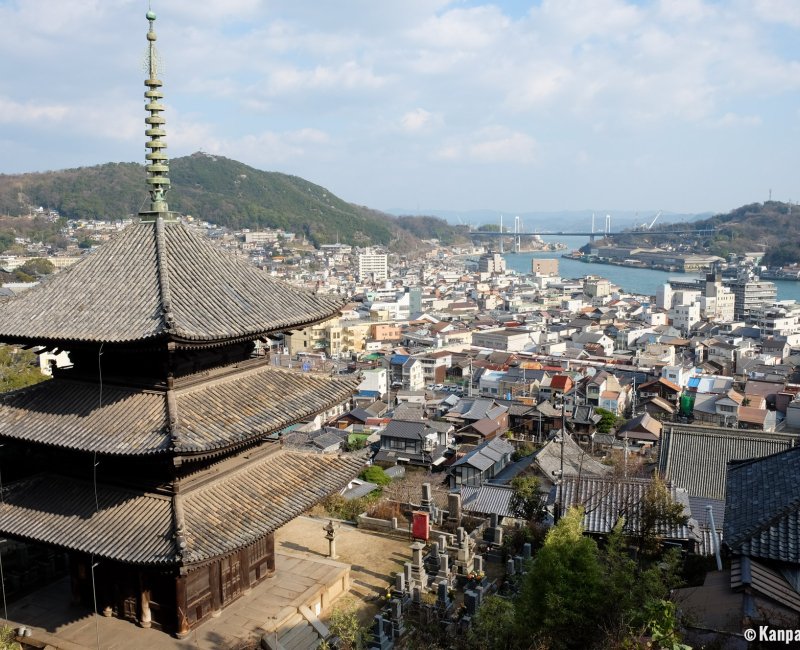
The Ryu-Kyu Kingdom (Okinawa) is building during the 14th and 15th centuries, and while still remaining independent, becomes an intermediary between Kyushu’s Satsuma clan and China.
In the north, exchanges and trade increase between the Ainu, the indigenous people of Hokkaido, and Mutsu domain (whose capital was Hirosaki in nowadays Aomori Prefecture) in the 14th century. From the 15th century, populations from Honshu even start to migrate to the south of Hokkaido.
Lastly, in 1543 the first Europeans land in Japan in the south of Kyushu and bring the first harquebuses. A few years later in 1549, the Jesuit missionaries, especially the famous "Apostle of the Far East" Francis Xavier (1506 – 1552), arrive in Kagoshima and start to convert the population to Christianity.
During the 16th century, at the end of the Muromachi Period, Japan becomes one of the main exporters of silver ore in the world, especially thanks to the Iwami Ginzan mines in the Chugoku.
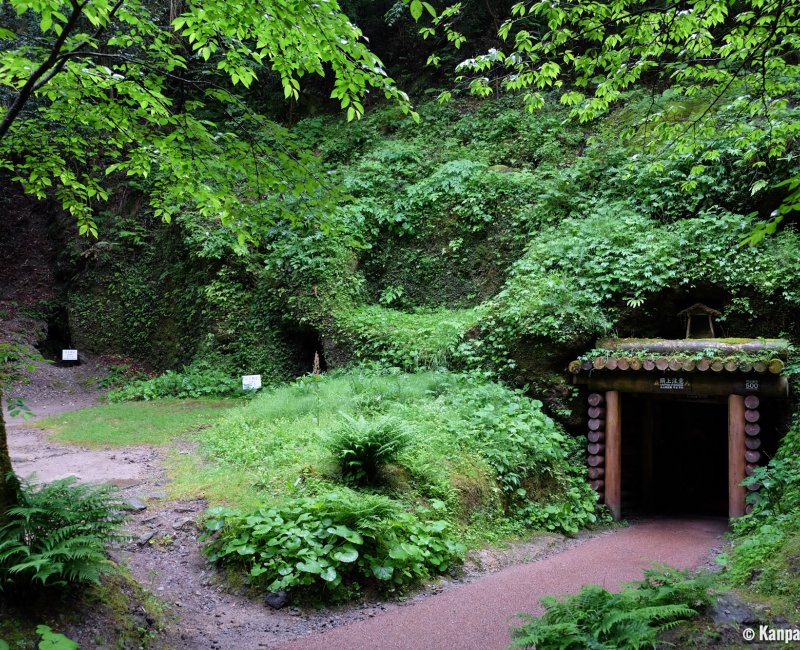
Growing population and urbanization
People mainly live in rural areas, but a trend to gather dwellings appears, partly for defensive purposes. Kyoto and Kamakura remain the 2 largest cities, but their number is rapidly increasing in the 15th and 16th centuries, essentially in the Kinai, the area at the core of all activities.
Thanks to the establishment of markets and the construction of religious complexes, the presence of one often leading to the adjunction of the other, new types of urban spaces appear:
- Temple towns (monzenmachi), like Sakamoto, at the foot of Mount Hiei, or;
- Castle towns (jokamachi) whose growing number is noticeable during the Sengoku period, due to the spread of armed conflicts and consequently the rise in fortress building.
Between the end of the 13th century and the middle of the 15th century, it is estimated that the population grew from 6 to 10 million inhabitants, to 15 to 17 millions just before the Edo period, mainly in the central Kinai area.
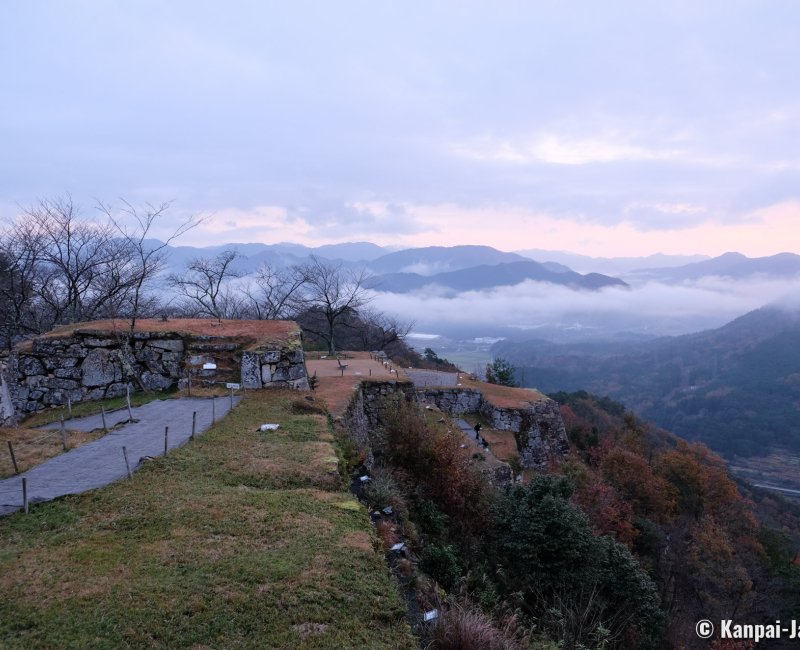
Thriving feudal culture
The arts and traditions that attract today’s Japan visitors started to thrive during the Muromachi period. Zen Buddhism is at the center of political circles and leverages on their influence and wealth to thrive both materially and by spreading to the population.
Artworks and buildings of this times have been unevenly preserved, especially in Kyoto that was partially destroyed after the Onin War. However, it is still possible to visit places testimony of the renewal in the art of gardening, which took a step away from the simple pleasure garden to embody values closer to Zen ideals such as contemplation, meditation and strolling:
- Saiho-ji (Kokedera), the Moss Temple, displays an ancient example of karesansui dry garden (mid-14th century), or,
- Ryoan-ji garden in Kyoto, designed in the early 16th century within the enclosure of the temple founded in 1450.
Architecture of lords residences and monasteries evolved to create the Shoin style, characterized by a tatami floor, fusuma indoor sliding partitions covered with opaque paper, and the use of squared pillars. The oldest example is the Togudo Pavilion, that was part of shogun Yoshimasa’s residence at the Silver Pavilion. Said Ginkaku-ji is by the way at the core of the "Higashiyama culture," that stresses humbleness and represents the early days of the tea ceremony and the Japanese wabi-sabi aesthetics.
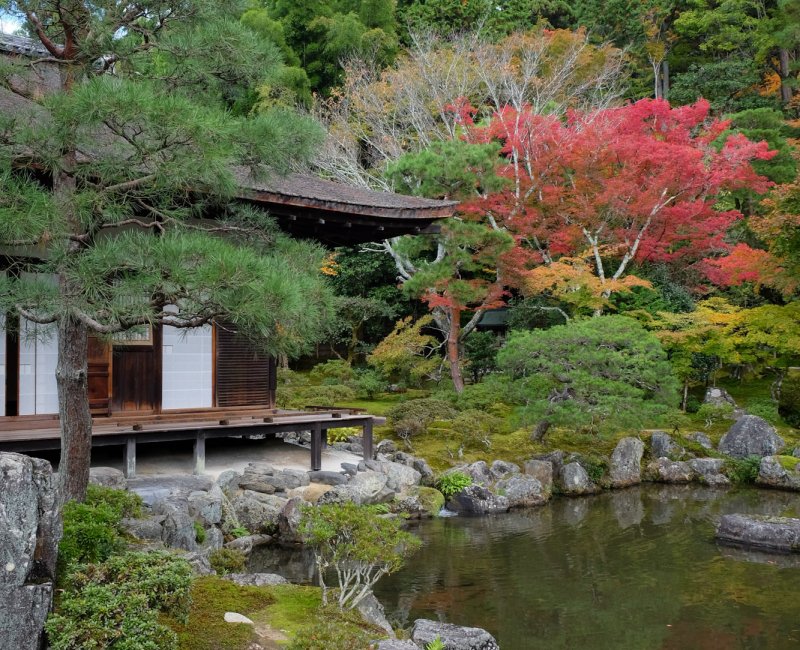
As for painting, the monochrome India ink painting Sumi-e (or suiboku-ga) reaches its golden age, enhanced by the exchanges of artworks between the continent and the archipelago and is gradually focusing on the representation of nature. The Yamato-e Japanese style painting is thriving at the Imperial Court, some schools specializing in portraits, and the ornamentation spreads to all types of surfaces with a predilection for colors, lavishness and the use of gold and silver leaves.
Several museums in Japan display artworks from the Muromachi Period, such as the Nezu Museum in Tokyo, the Tokyo National Museum or Atami’s MOA Museum of Arts.
The Kitayama culture, stemming from shogun Yoshimitsu, participates in the birth of Noh theater, which is a derivation of traditional sacred dances, and particularly enjoyed by the elites. The Higashiyama culture on the other hand, promoted the comical and satirical theater Kyogen very popular in the general population.
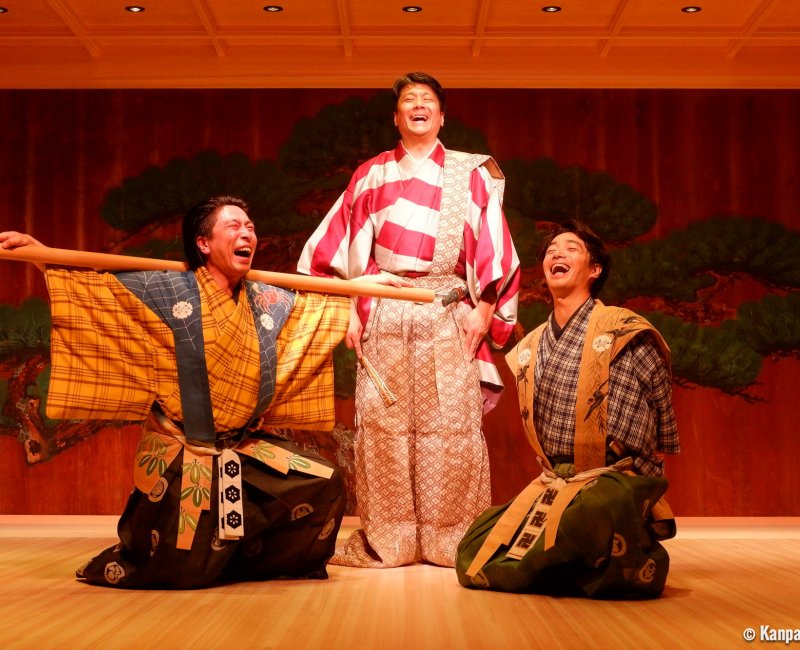
These trends towards artistic extravagance will flourish in the next period, called Azuchi-Momoyama. This historical subdivision opens a transition from a permanent conflict period to the unification of the Japanese territory under the authority of 3 essential personalities in the history of Japan : Oda Nobunaga, Toyotomi Hideyoshi and Tokugawa Ieyasu.

